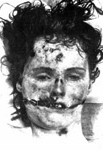the NachtKabarett
All Writing & Content © Nick Kushner Unless Noted Otherwise
 |
 |
| 'Experience is the Mistress of Fools', Manson's watercolor reworked as a cover for the best of album 'Lest We Forget' in 2004. | The original press and poster photo used as the masthead for the 'Against All Gods' tour in 2004 - 2005. |
Marilyn Manson 2004 to 2006, chronically the 'Lest We Forget' "Best Of..." era and the 'Against All Gods' tour. The imagery & influences of this interim, gestation period, as well as the inspirations which Manson has alluded to throughout. All leading up to the "lost" Celebritarian Corporation era until Manson's drastic shift in direction with the emergence of 'Eat Me, Drink Me' in 2007.

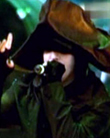




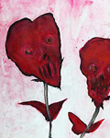
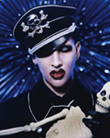 |
|||||||
Click thumbnails above for each influence on the Lest We Forget era. | |||||||
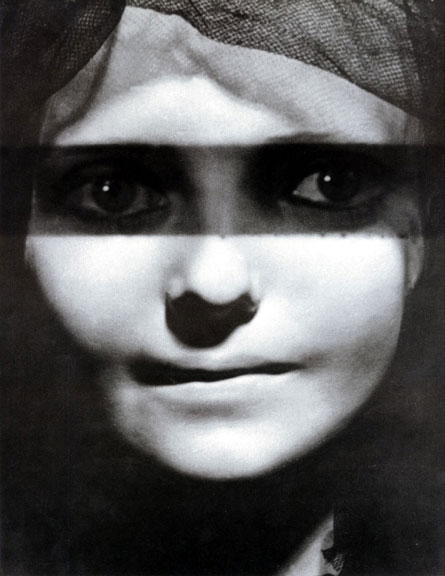 |
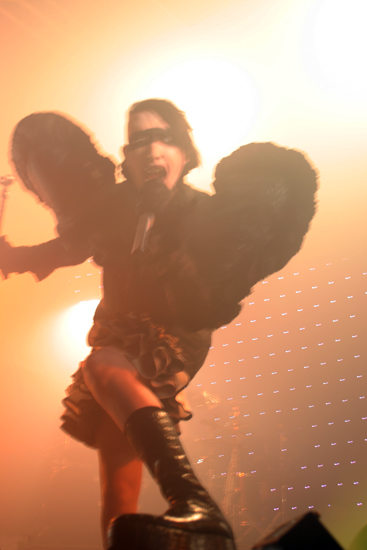 |
| Composition for Aurélien/L'inconnue
by Arragon, c. 1950. Photo by Man Ray, from the book Man Ray, 1890-1976. |
Manson performing live on the AGAINST ALL GODS Tour. Photo by Cyril Helnwein. |
 |
 |
| Left ; The Scartet Empress. Right ; Tim Skold, 2005 on the European leg of the Against All Gods tour. | |
The Scarlet Empress starring the German, dark and sultry voiced Marlene Dietrich whom Manson has referenced and evoked often during the Golden Age of Grotesque, is a film which Manson had first mentioned in the Summer of 2005 in the cover issue of the Russian Rolling Stone. It is highly elaborate in its costume and set design with an epic cast of over 1,000. Originally bombing after its release in 1934, it marked the continuation of Dietrich and Josef von Sternberg's partnership following The Blue Angel and it has since become much more highly regarded in recent times being re-released by avant garde movie company Criterion.
 |
 |
The entire movie, grandly elaborate, ornate and often surreal in setting exaggeration in its imagery appears reminiscent, or at least definitively influential to Manson as a whole. It tells the story of the grand duchess Catherine who is bound into marriage with the inept and imbecilic arch duke of Russia, forced into assimilation of Russian culture and the abandonment of her native Prussian. She eventually overcomes personal and petty opposition within the royal family to rise to written into history as Catherine the Great, beloved by the Russian people and Europe as a whole. Though the time period it is set in predates the Victorian era, which Manson had cited as influential throughout the 'Lest We Forget' / 'Against All Gods' era, by almost a hundred years the imagery of the film, its ornate and costume design is very much a nod to the grand Victorian ideals.
 |
 |
A very subtle and short element within the film is what brings to mention here. The strange skeletal skirt which Skold wore throughout the European Against All Gods tour is an allusion the puffed and grandiose clothing of the Victorian era, that being the hooped skeleton of a Victorian dress. The skeleton of which Marlene appears wearing in-action during a brief scene in the Scarlet Empress.

The first mention Manson made of the Black Death was in November 2004 during the 'Against All Gods' tour in a British one-page spread on his influences at the time. Since then, several more allusions have been made during this time, including the detail that Manson will explore the origins of the Black Death as well as its influences upon art and society which continue today. Most exceptionally, as cited by Manson, the Plague's insidious presence upon art and creativity, that the first skeletons only began appearing within paintings after the Plague had decimated a third of Europe.
 Manson performing The Nobodies on the European Against All Gods tour.
Manson performing The Nobodies on the European Against All Gods tour.During the Against All Gods tour, a small handful of visual allusions with connotations to the Black Death were made by Manson. The most striking to note, though marginally ambiguous to the topic, was during the 2005 Against All Gods European tour as Manson performed The Nobodies in a strange black hooded costume. Aside from merely the visual aspect of appearing dark and ominous the outfit does however work on two levels in the context of Manson's earlier Black Death hint: that being, playing the role of the bizarre Plague physicians who treated the victims and also being reminiscent of the sect of people known as the Flagellates, who true to name marched across Europe in morbid parades all the while whipping themselves with cat-o-nine tails, making themselves suffer to atone and appease their God in the belief that the Plague was God's wrath afflicting mankind for its sinful ways. The Flagellates were the converse opposite to those who indulged in earthly delights in the belief that the end was inevitable.
 |
 |
| An illustration of the procession of flagellates scourging themselves to atone for the wrath of God. This and 2 live images thanks to Bullsik of MansonPL.com, friend of The NACHTKABARETT. | Still frame of the interlude procession of flagellates in Ingmar Bergman's Seventh Seal (a personal favourite of the author's since the mid nineties), an often cited influence of Manson's since late 2004. |
A tangential note, Manson also cited Igmar Bergman along with the likes of horror directors such as Alfred Hitchcock (whose voice can be heard in the Celebritarian incarnation of MarilynManson.com) and Roman Polanksi as stylistic influences in filmmaking for Manson's film project Phantasmagoria : The Visions of Lewis Carroll.
 |
 |
| More stills from Igmar Bergman's The Seventh Seal. Left, a self flagellating repenter; right a bloodied marcher inflicting pain upon he who walks ahead of him just as he who walks behind him whips him reciprocally. | |
Above all, the concept and allusion to the Flagellates works effectively in Manson's continuous body of work as the illustration of self-imposed guilt which the veil of Christianity influences its adherents to subscribe to. Thus creating for themselves a Hell on Earth in this life to escape punishment in the next; to paraphrase as Manson once put it. This being a much more extreme, physical and literal illustration of such.
 |
 |
| Black Death Physicians outfit designed to safeguard against any skin or inhalation of the virus and its then unknown method of transmission. Visually similar, or at least related, Black Death symbolism which can be taken as inspiration for Manson's black cloaked wardrobe. | |
The Damned: An Illustrated History of the Devil by Robert MuchembledPaul Fürst, A Doctor's Protective Clothing for Treating Plague Victims, 1656. Engraving.
Private Collection
Doctors who were exposed to the plague covered every inch of themselves in clothing and protected themselves with aromatic substances. The desire to completely cover all bodily orifices was not linked with the idea of germs in the sense that we know it today. Instead, it was an attempt to prevent any contact with "poisonous vapors" in the air. According to contemporary thinking, the plague was caused by God's desire to punish sinner or, more often, by the Devil's meddling. The horrible odors associated with disease, decay, and rotting indicated the Devil's presence. According to plague doctors, women were naturally malodorous and belonged more to the Master of Decay than to the Creator.
 |
 |
| Flagellate members invoking and reenacting the passion of Christ as others preach the damned and sinful fate of man. | The Seventh Seal by Igmar Bergman Hooded members of the flagellates, preaching the sinful ways of mankind as the cause of the Plague, swinging the holy burning censers of the clergy. |
 |
 |
| Manson emerging onstage as the prelude of the AGAINST ALL GODS tour with a
burning censer enshrouding the stage in smoke. Photo by Cyril Helnwein. |
A Plague era oddity depicting death and fragranced smoke as a method of warding away the affliction. |
The Damned: An Illustrated History of the Devil by Robert MuchembledAnonymous, Doctor's Plague Costume.
Colored copper engraving, eighteenth century. Private Collection
The malignancy of the plague required total bodily protection in order to avoid contact with the infected air. Dealing with cadavers and visiting infected locations made fumigations necessary. In the sixteenth century, the famous physician Ambrose Pare advised chasing away Evil with Evil: To make the plague leave a house, her suggested bringing a goat inside - the animal's odor would chase away danger. In the collective imagination of the period, the stench of the Devil was linked to disease, death, and the cold, moist bodies of women.
As also discussed within the ART & THE GOLDEN AGE OF GROTESQUE section of The NACHTKABARETT, the fishnet stocking clad five legged pentagram which makes up the CD cover of Lest We Forget is derived in part from an old poster for the musical Cabaret.
Given Manson's very obvious invigorated interest in Occult symbolism, whether intentional or not the leg motif on Lest We Forget bears a parallel to one of the demons from the Goetia with circumambulating legs.
 |
 |
The Tenth Spirit is Buer, a Great President. He appeareth in Sagittary, and that is his shape when the Sun is there. He teaches Philosophy, both Moral and Natural, and the Logic Art, and also the Virtues of all Herbs and Plants. He healeth all distempers in man, and giveth good Familiars. He governeth 50 Legions of Spirits, and his Character of obedience is this, which thou must wear when thou callest him forth unto appearance.The Goetia
The Goetia is also known as the Lesser Key of Solomon, a guide to the evocation of "demons" or lesser, incomplete, vice-obsessed angels, those who aid in the procuration of sex, money and earthly pleasures. The grimoire which originates from a circa 16th Century manuscript was originally begun exhumed by S. Liddell Macgregor Mathers, co-founder of the occult organization The Golden Dawn, and later translated and published by Aleister Crowley in the early years of the Twentieth Century.
This making another connection, if only coincidental, to many of the Crowleyan references Manson has made since the dawn of 'Lest We Forget' leading up to 2006.
Collaboration with Obyvatelius_Vulgaris | PaintPit.ru

In the beginning of October 2006 the official merchandise website was updated with a load of new T-shirts grouped under a newly added Retail Merchandise section. While most of the T-shirts featured already familiar imagery from different eras of Manson's work, two of them stood out as completely new in their concept. They are Circle 7 Tee and Double Double Tee.
The first contains the Star of Babalon which has been a recurring element in the imagery Manson had been revealing since announcing the resurrected concept of Celebritarianism, and because of this frequency appears to be a significant part of his intentions for the Celebritarian Corporation. As discussed previously on The NACHTKABARETT the first instances of Manson's use have been during the Holy Wood era but since March of 2006 it has cropped up again within designs of this time period, most notable on the forehead of Manson on the Celebritarian Corporation masthead shirt, creating a signaturized portrayal of the Biblical Revelation's prophecy of the Mark of the Beast.

In the design of the second T-shirt, Double Double, Manson reinterpreted a medieval Christian symbol of authority known as the globus cruciger or just the orb. The globus cruciger is basically an orb (globus) topped with a cross (cruciger), and along with the scepter it was widely used by Christian monarchs as a symbolical representation of the triumph of Christianity in the whole world.
As many other Christian symbols, the globus cruciger is derived from antiquity. In Ancient Rome plain round orb was a representation of the world (in Latin orbis terrarum, the 'circle of countries', hence the word orb) or the universe as a harmonious whole (i.e. the cosmos) and holding it in one's hand was a clear message of power. Romans associated it with Jupiter (along with the scepter as another main attribute of Jupiter) and, hence, with the emperor as his earthly representative. By setting a cross above the orb Christians reinterpreted the symbol as Christ's (the cross) dominion over the world (the orb).
 A Twelfth Century depiction of Christ holding the globus cruciger.
A Twelfth Century depiction of Christ holding the globus cruciger. Manson goes back to the origins of this symbol thus using a circle (that's what the word orb literally means) in place of a traditional ball. The circle used is basically an element of his new symbol, the symbol of The Celebritarian Corporation, and it's encircled with fifteen Crosses of Lorraine. One of those crosses is clearly bigger that the others and it's topping the orb making it look a lot like the globus cruciger. Therefore Manson affirms not the Christ's dominion over the world but dominion of the main occult principle 'as above, so below' embodied in the Cross of Lorraine. The bigger red Cross of Lorraine which can be seen on the background is emphasizing this dominion.
It is also essential that on the back side of the T-shirt a weird green skull & bones symbol is inscribed within the orb and that may be seen as a direct reference to Celebritarianism. As Aleister Crowley once put it in his Equinox of the Gods, "Christianity and all cognate religions worship death, glorify suffering, deify corpses." One cannot also leave out the association of the globus cruciger with Jupiter and the emperor and hence with the whole idea of Will to Power that was a crux in the Triptych (compare with the Emperor Tarot card in Manson's deck).

Prior to the commencement of the Against All Gods tour, and long before any indication of a new era had surfaced, Romanticism was able to exert its influence over many aspects of Marilyn Manson's artwork. Indeed, many of the artists whom Manson has examined or drawn upon: the Marquis de Sade, Oscar Wilde, Francisco Goya, Friedrich Nietzsche, and Edgar Allen Poe - among others - were all prominent figures of Romanticism.
Romanticism is perhaps best defined as a movement; a movement which would later be known by some as the Counter-Enlightenment. Because of such, Romanticism was more than just a period in history, it was a period which looked to the beliefs of an earlier time, a period of new perspectives, and above all else a period of rediscovery and appreciation for beauty in all forms, be it dark or light. Because of these values, Romanticism was able to live through a significant stretch of time and flourished quite heavily between the mid to late 18th century to the early 19th century.

With much anticipation of the inspirations Manson had been citing, talk began to circulate among the fans that Manson's direction would prove to be founded on love and romance. When Manson gave an extensive interview to Mansonusa.com, he was given the chance to clarify this direction:
This album comes from a lot of different places, but I'd call it a romantic record and not in like holding hands and walking in the moonlight, but romantic like the unfulfilled yearning to be in another time or another place where you feel like you would fit in better. That's something that everybody can relate to. It also has a lot to do with a yearning to find another person to share that with. It's the struggle that you have looking for that. It's very unlike anything we've done. It's also very dark in a sense.
Romanticism in its purest sense strikes a parallel with every single aspect of the description above. The Romantics were an eccentric group, primarily composed of artists and intellectuals, living in a society in which they felt they didn't belong. With industrialization, the rapid destruction of nature, a growing disbelief in God, and the rejection of the abstract in favour of cold and objective science, the Romantics sought to find a world in which they could fit in better. When it could not be found, they created it; through philosophy, the arts, theology, and other avenues, the Romantics quickly set themselves up in opposition to their surrounding culture.
While Romanticism is not romantic in the modern understanding of the word, that level of romance can (and does) factor into a tiny sliver of the equation. The followers of Romanticism sought to elicit strong responses from themselves, and so anything which could make them feel more in tune with humanity or the earth was respected: horror, awe, fear, panic; all of these emotions previously labeled as negative or as a sign of weakness became reassurances of the human nature of mankind.
Any emotion, artwork, or viewpoint which could transcend the Romantics from a society that was becoming increasingly more bleak and mechanized was celebrated, regardless of whether it was regarded as 'positive' or 'negative'. Because of this, the Romantics saw beauty in all things, and the previous black and white definitions of good and evil became gray. While love could be romantic, so too could horror, and both were regarded as beautiful and romantic for their ability to move people.
But above all, nature itself was the pinnacle of beauty, as it gave infallible reassurance of life and divinity to the Romantics, and gave constant reminder to them that there were still things in the world which exceeded mankind. In many ways, nature became the adopted mother to the Romanticists.
Manson's identification with Lewis Carroll also parallels itself with the Romantics who sought to create a more suitable time and place. Carroll, born near the beginning of the Victorian Era (and dying shortly before its end), spent a great deal of his time in isolation. While the Romantic movement was for the most part coming to an end by the start of his life, it would be hard to tell by reading Carroll's work. Exploring a vast array of subjects and writing on love, beauty, and alternate realities, it is plainly evident that Carroll felt as though he was trapped in a society in which he felt he didn't belong. Photography and writing became outlets to create a new world, and indeed, once technology made the process of photography easier, the world flooded into his once isolated art, and he promptly abandoned it.
 Adam Ant,
Adam Ant,wearing the white version of Manson's ever utilized black stripe under the eyes.
In a more modern world, Romanticism made a revival in the 80's with the 'New Romantic' movement, often referred to or overlapping with the New Wave movement that stemmed from the post-Punk, post-Sex Pistols underground, and Manson has spoken of numerous artists of that time period. The New Romantic movement, true to name, emulated that very ethos combining the over-the-top punk theatrics with vaudeville and elements of even Victorian era ornateness, predating and in a sense giving birth to the oftentimes surreal and always extravagant club kid movement led by Michael Alig, Leigh Bowery, James St. James and many others in the early 1990's. Interesting enough it was this same underground scene which Manson "reenacted" by playing the role of Christina in the film 'Party Monster', based on the book 'Disco Bloodbath' written by James St. James about Michael Alig about this time period in early 1990's New York City.
 |
 |
| Cover for the film Part Monster. | Manson as "Christina" from the 2002 movie 'Party Monster'. |
Most prominently referencing David Bowie for a number of years, Manson made mention of some his direction during this time period being influenced by David Bowie, the father of glam, theatric and conceptual rock. Specifically his Diamond Dogs album. Other prominent artists who have at some point been regarded as part of the British Underground New Romantic movement include: pre-Culture Club Boy George, Adam and the Ants, Depeche Mode, Eurythmics, and Soft Cell - the last three of which Manson has spoken of, or covered in the past.
 |
 |
| Adam Ant, during his 'Stand and Deliver' era and Marilyn Manson live on the Guns, God & Government tour 2001. | |
 |
 |
| Adam Ant and Marilyn Manson photographied by Dean Karr during the beginning of the Mechanical Animals era. | |

Marked by the rule of Queen Victoria, the Victorian era (1837 - 1901) was an era wrapped in contradictions, technological revolutions, contrasting thoughts, strict views on morality, and interesting views on women and children.
 The Queen: the quintessential Victorian of whom morality was based upon.
The Queen: the quintessential Victorian of whom morality was based upon.With such a rich tapestry of history, it is not surprising that Manson would look, allude, and parallel to the Victorians. A society marked by contradictions, dichotomy, and artistic wonders, it served as the breeding ground for many great thinkers and artists.
While the Black Death had begun to sink into dormancy, subsiding from prior major outbreaks of Biblical proportion which paralleled the Book of Revelation, into a gentle murmur in the night, there were still a handful of epidemics which would carry on in its place, including typhus, but most notably cholera -- to such an extent that cholera became viewed and personified by many as the gift of death.
 Le Petit Journal (The Little Journal) depicting Death as the bringer of cholera.
Le Petit Journal (The Little Journal) depicting Death as the bringer of cholera.Apart from death being delivered in the form of cholera, the Victorian era was an era marked by bloodshed, due to the number of wars and global conflicts which were present during this era; the Boer War, the Crimean War, uprisings in India, all of which were only the tip of the iceberg.
Uprising came in many more forms other than through violence. A more subtle and dangerous uprising began; an uprising of the mind and will. Basic beliefs and values that were held to be true for centuries on end, through countless generations, now began to come into question. Charles Darwin delivered one of the most momentous blows to the Victorian Era, causing the public to rethink or refute the philosophy and ideology which was now bringing history, evolution, theology, science, and even morality, into question. Insecurity and doubt rose in the mind of the public, as church, state and other authorities worked on damage control.
Women held a particularly interesting role within the Victorian culture. Never was a gender so respected, yet oppressed, prudish, yet sexually active. Sharing parallels with today's culture, women were still pressured to conform to rather unrealistic and idealistic forms of beauty; however unlike today's youth, their beauty was also considered largely to be based upon their purity.
The figure of a woman was seen as sacred, their body a temple. To desecrate the temple with physical adornments such as excessive jewelry or to diminish the natural beauty of God's creation with makeup was seen as slanderous, and heretical, the work of a prostitute or common riffraff. The ideal for any woman was to maintain a childlike innocence, while keeping a doll-like perfection of beauty. In order to achieve this lofty goal, women would carry parasols, wear clothing that would cover as much of their exposed skin as possible (often wearing scarves to cover and protect other parts of the body), drink vinegar to maintain a pale complexion, and avoid direct sunlight. This era and its philosophy of beauty is in part where the pale, vampiric "gothic beauty" originates from, as well as the fetishized attire of restraint. BDSM aesthetic owes much to the Victorian full arm length lace gloves and corsets which today are more commonly replaced by the same in shiny black PVC leather.
Such a culture of repression and purity, however, created a contrast in many ways as the Victorian era became an era of introspective sexual revolution, with erotic literature, photographs and art flourishing greatly:
 |
 |
| Various examples of Victorian erotic photography/pornography. | |
 |
 |
I quickly felt his finger again introducing the head of that terrible engine I had before felt, and which now felt like a pillar of ivory entering me. My petitions, supplications and tears were of no use. I was on the altar, and, butcherlike, he was determined to complete the sacrifice; indeed, my cries seemed only to excite him to the finishing of my ruin, and sucking my lips and breasts with fury, he unrelentingly rooted up all obstacles my virginity offered, tearing and cutting me to pieces, until the whole of his terrible shaft was buried within me. I could bear the dreadful torment no longer, but uttering a piercing shriek sunk insensible in the arms of my cruel ravisher.The Lustful Turk, 1828
 |
 |
| Similar tones, shapes and goal in a series of erotic portraits by Jurgen Teller showing the couple's intimacy, published in FHM Collections in September 2004, alongside with an interview of Dita. | |
Where lust can be found, violence and death is usually not far behind; with that, one of the most notable serial killers in history also made his debut during this time period. In 1888 the serial killer with the pseudonym 'Jack the Ripper' murdered and mutilated at least five prostitutes, terrorizing the streets of London, causing the police to go into a frenzy. And just as today, this caused the public to fixate and buzz like flies around the swarm of death, as newspapers and world wide press coverage was made, and the young and old alike greedily devoured every last bit of it, in something on a Nineteenth Century Celebritarian demonstration.
 |
 |
| Left : the very graphic cover of the movie From Hell. Right : Manson and Depp at the film's premiere in 2001. | |
Familiar to most, and as also mentioned in the CELLULOID section of The NACHTKABARETT, the 2001 film From Hell starring friend of Manson's and fellow Absinthe connoisseur, Johnny Depp, is a surreal and conspiratorial retelling of Jack the Ripper's scourge across Victorian London. Notably, Manson composed the original score which was later replaced with a more "classical" cinema soundtrack but instead contributing the Wormwood Remix of The Nobodies to the film's credits giving the Victorian connection in Manson's body of work a much earlier beginning.
A final point, it is also notable to mention two particular Victorians of which Manson has drawn upon on several occasions, Lewis Carroll and Oscar Wilde, both prominent artists of the Victorian era, which would undoubtedly serve many prominent allusions by Marilyn Manson, and will likely to continue to in the future.
 |
 |
| Above Left to Right: Oscar Wilde & Lewis Carroll, Victorian Artists Extraordinaire. | |
 |
 |
| Oscar Wilde, one of the foremost influences on Manson's writings during The Golden Age of Grotesque. | Manson in the Summer of 2005 in the first online press release of the forthcoming Phantasmagoria film. |
 2006 promotional poster artwork for Phantasmagoria. Discussed further below, the dapper & well dressed attire of the central headless figure is a direct illustration of the Victorian male aesthetic. This time period, that of Lewis Carroll, is set in.
2006 promotional poster artwork for Phantasmagoria. Discussed further below, the dapper & well dressed attire of the central headless figure is a direct illustration of the Victorian male aesthetic. This time period, that of Lewis Carroll, is set in.
The real is the scariest thing of all. I'm attracted to the idea of the artist removing the mask. But now...I'm not sure what is underneath all of my masks...or if there is anything. Probably another mask. The word 'persona' really implies playing someone else when you're creating things, but I don't think I could be more 'me' when I'm creating things. Is there a good side to that?Marilyn Manson
 |
 |
| Left; A lavishly dressed Victorian opera singer. Manson onstage in Europe 2005, the Wagnerian demagogue; in Victorian skirt and vest, accented by the eccentric ruffles of a Victorian opera singer spilling out of the frock coat. | |
In early 2005 during the close of phase one of the 'Against All Gods' tour, in an interview with the Korean press after his first ever performance in the country, Manson hinted that a musical exploration he had was pursuing contained new forays of experimentation, including that of operatic elements. Though this had not revealed itself in the form of new music during this era, throughout the second leg of the tour Manson donned many costumes evocative of operatic attire.

 |
 |
| Left; Manson bearing a cane (a popular Victorian accessory for men) among several doppelgangers bearing his visage. Right; Manson faces another mask similar dotted pattern along and underneath the neck which was a fashion of the era. | |
 |
 |
| Manson wearing traditional Victorian bowler cap and, left, the Operatic Maestro, suited in Victorian clothing, holding a cane, presented in front of wall of masks. | |
 |
 |
| Manson dressed in very formal attire, donning a cloak, white gloves, a gentleman's cane and bow tie. Above Right: Man of a Thousand Faces, Lon Chaney, Sr. in 'Phantom of the Opera'. | |

Lily Cole, who is a model, she has red hair and very striking features like a doll.Dramatic New Scenes for Celebritarian New Needs
Dolls were a collector's item to the Victorians, who valued their perpetual beauty, fair skin and innocent appeal. Lily's alabaster skin was much sought after by Victorian women in England, who would often drink vinegar in attempts to keep their skin pale.
 |
 |
| Lily Cole, resting with a parasol. To Victorians, the parasol was more than just a shield from the weather, it served as a practical fashion accessory, which helped keep a lady's skin pale and untanned, protecting them from the sun, alongside 'Woman with a Parasol' by Claude Monet, 1886. | |
 |
 |
Fritz Lang, director of 'M', of which Manson has alluded to in previous imagery, wears the monocle that would eventually become synonymous with his name. Monocles were commonplace among some gentlemen and dandy's of the Victorian era. Similarly, Dita Von Teese in a bowler hat and Marilyn Manson in a traditional suit, with one lens missing from his eyeglasses, creating a makeshift monocle for his left eye, the same as film maker Fritz Lang.
 |
 |
| More shots of Manson's monocle, an eccentricity common to several artists. | |
 |
 |
| From Left to Right: Manson, Pogo & Mark in formal Victorian frock coats, wearing a simple dress shirt underneath. | |

 |
 |
| Tim Skold plays his bass in a mesh wire frame for a hoop skirt. Right, Two women dressed in Victorian hoop skirts to shape their bodies as per fashion dictated at the time. | |
 |
 |
| Marlene Dietrich puts on a hoop skirt in 'The Scarlet Empress'. | |

Manson wearing an officer's frock coat, with evocations of both the Victorian era and WWII. On the left shoulder are adorned two bone chevrons, a symbol of military rank but in its deathly representation a rather noticeable reference to the Black Death. An outfit frequently donned by Manson throughout this time period. Created by fashion collaborator John Galliano in the style of Vivienne Westwood (whom Manson also modeled for in 2005) who in the early 1970's toyed with the similar concept of spelling the word 'SEX' with chicken bones on her early designs.
 |
 |
| Marilyn Manson, wearing a WWII officer hat and a patch of British insignia. Right, British insignia patch of a crossed baton and sword under the Victorian crown, most likely denoting the rank of Colour Sergeant. | |
 |
 |
| Manson with above-mentioned sword / baton insignia and another presumably Victorian yet unidentified patch. Right, Skold in military officer's jacket. Below, similar of Manson in front of Pogo's synthesizer gallows. | |

 Les Fleurs du Mal (The Evil Flowers). Manson's evocation of The Garden of Live Flowers and later the title of his worldwide 2007 painting exhibition.
Les Fleurs du Mal (The Evil Flowers). Manson's evocation of The Garden of Live Flowers and later the title of his worldwide 2007 painting exhibition.While flowers today are typically regarded with specific characteristics attributed to each respective flower, it was the Victorians who first brought about a rich tapestry of floriography. During the Victorian era, a great deal of the now iconic symbologies came into place, including the most famous flower related symbology that of the red rose as a gesture of unshakable passion, desire, fidelity or faithfulness. As public displays of affections were not socially acceptable at the time, flower exchange became a popular medium in the attempt of expressing sentiments to others.
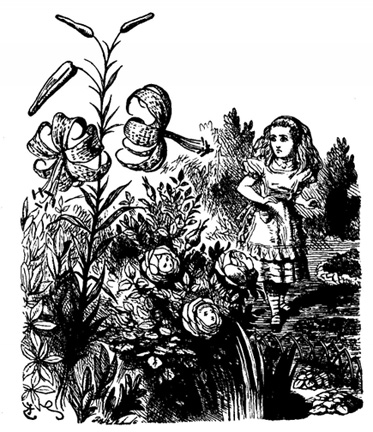 |
 |
| Original drawing by John Tenniel with Alice exploring 'The Garden of Live Flowers', in one of her travels throughout Wonderland. | The same garden as seen in Disney's version of the tale. |
The Victorians were very much a culture intertwined with that of flowers, and it was not uncommon for large arrangements to be featured within the home, or accessorized onto an article of clothing. In addition, during regular picnic visitations to loved one's graves, roses were often left by each of the members of the family as a sign of eternal faithfulness and as a sign of respect.
 |
 |
Besides referring to the Romantic Charles Baudelaire, Manson's painting of Les Fleurs du Mal relates back to the work of Lewis Carroll, who made mention to roses in both Through the Looking Glass as well as Alice in Wonderland:
This time she came upon a large flower-bed, with a border of daisies, and a willow-tree growing in the middle.
`O Tiger-lily,' said Alice, addressing herself to one that was waving gracefully about in the wind, `I wish you could talk!'
`We can talk,' said the Tiger-lily: `when there's anybody worth talking to."
Alice was so astonished that she could not speak for a minute: it quite seemed to take her breath away. At length, as the Tiger-lily only went on waving about, she spoke again, in a timid voice -- almost in a whisper. `And can all the flowers talk?'
`As well as you can,' said the Tiger-lily. `And a great deal louder.'
`It isn't manners for us to begin, you know,' said the Rose, `and I really was wondering when you'd speak! Said I to myself, "Her face has got some sense in it, thought it's not a clever one!" Still, you're the right colour, and that goes a long way.'
`I don't care about the colour,' the Tiger-lily remarked. `If only her petals curled up a little more, she'd be all right.'
Alice didn't like being criticised, so she began asking questions. `Aren't you sometimes frightened at being planted out here, with nobody to take care of you?'
`There's the tree in the middle,' said the Rose: `what else is it good for?'
`But what could it do, if any danger came?' Alice asked.
`It says "Bough-wough!" cried a Daisy: `that's why its branches are called boughs!'
`Didn't you know that?' cried another Daisy, and here they all began shouting together, till the air seemed quite full of little shrill voices. `Silence, every one of you!' cried the Tiger-lily, waving itself passionately from side to side, and trembling with excitement. `They know I can't get at them!' it panted, bending its quivering head towards Alice, `or they wouldn't dare to do it!'
`Never mind!' Alice said in a soothing tone, and stooping down to the daisies, who were just beginning again, she whispered, `If you don't hold your tongues, I'll pick you!'
There was silence in a moment, and several of the pink daisies turned white.
`That's right!' said the Tiger-lily. `The daisies are worst of all. When one speaks, they all begin together, and it's enough to make one wither to hear the way they go on!'
`How is it you can all talk so nicely?' Alice said, hoping to get it into a better temper by a compliment. `I've been in many gardens before, but none of the flowers could talk.'
`Put your hand down, and feel the ground,' said the Tiger-lily. `Then you'll know why.
Alice did so. `It's very hard,' she said, `but I don't see what that has to do with it.'
`In most gardens,' the Tiger-lily said, `they make the beds too soft -- so that the flowers are always asleep.'
This sounded a very good reason, and Alice was quite pleased to know it. `I never thought of that before!' she said.
`It's my opinion that you never think at all,' the Rose said in a rather severe tone.
`I never say anybody that looked stupider,' a Violet said, so suddenly, that Alice quite jumped; for it hadn't spoken before.
`Hold your tongue!' cried the Tiger-lily. `As if you ever saw anybody! You keep your head under the leaves, and snore away there, till you know no more what's going on in the world, that if you were a bud!'
`Are there any more people in the garden besides me?' Alice said, not choosing to notice the Rose's last remark.
`There's one other flower in the garden that can move about like you,' said the Rose. `I wonder how you do it -- ' (`You're always wondering,' said the Tiger-lily), `but she's more bushy than you are.'
`Is she like me?' Alice asked eagerly, for the thought crossed her mind, `There's another little girl in the garden, somewhere!'
`Well, she has the same awkward shape as you,' the Rose said, `but she's redder -- and her petals are shorter, I think.'
`Her petals are done up close, almost like a dahlia,' the Tiger-lily interrupted: `not tumbled about anyhow, like yours.'
`But that's not your fault,' the Rose added kindly: `you're beginning to fade, you know -- and then one can't help one's petals getting a little untidy.'
Alice didn't like this idea at all: so, to change the subject, she asked `Does she ever come out here?'
`I daresay you'll see her soon,' said the Rose. `She's one of the thorny kind.'
`Where does she wear the thorns?' Alice asked with some curiosity.
`Why all round her head, of course,' the Rose replied. `I was wondering you hadn't got some too. I thought it was the regular rule.'
`She's coming!' cried the Larkspur. `I hear her footstep, thump, thump, thump, along the gravel-walk!'
Alice looked round eagerly, and found that it was the Red Queen. `She's grown a good deal!' was her first remark. She had indeed: when Alice first found her in the ashes, she had been only three inches high -- and here she was, half a head taller than Alice herself!
`It's the fresh air that does it,' said the Rose: `wonderfully fine air it is, out here.'
"I think I'll go and meet her,' said Alice, for, though the flowers were interesting enough, she felt that it would be far grander to have a talk with a real Queen.
`You can't possibly do that,' said the Rose: `I should advise you to walk the other way.' Through the Looking Glass, Chapter II : The Garden of Live Flowers
 Marilyn Manson & Dita Von Teese's (then) wedding reception. Its abundance of thousands of roses make it a fitting footnote
Marilyn Manson & Dita Von Teese's (then) wedding reception. Its abundance of thousands of roses make it a fitting footnote here, aside from its commonplace role as a symbol of love.
A smaller passage in Alice in Wonderland also makes references to roses:
A large rose-tree stood near the entrance of the garden: the roses growing on it were white, but there were three gardeners at it, busily painting them red. Alice thought this a very curious thing, and she went nearer to watch them, and just as she came up to them she heard one of them say, `Look out now, Five! Don't go splashing paint over me like that!'
`I couldn't help it,' said Five, in a sulky tone; `Seven jogged my elbow.'
On which Seven looked up and said, `That's right, Five! Always lay the blame on others!'
`You'd better not talk!'said Five. `I heard the Queen say only yesterday you deserved to be beheaded!'
`What for?' said the one who had spoken first.
`That's none of your business, Two!' said Seven.
`Yes, it is his business!' said Five, `and I'll tell him--it was for bringing the cook tulip-roots instead of onions.'
Seven flung down his brush, and had just begun `Well, of all the unjust things--' when his eye chanced to fall upon Alice, as she stood watching them, and he checked himself suddenly: the others looked round also, and all of them bowed low.
`Would you tell me,' said Alice, a little timidly, `why you are painting those roses?'
Five and Seven said nothing, but looked at Two. Two began in a low voice, `Why the fact is, you see, Miss, this here ought to have been a red rose-tree, and we put a white one in by mistake; and if the Queen was to find it out, we should all have our heads cut off, you know. So you see, Miss, we're doing our best, afore she comes, to--'Alice's Adventures In Wonderland, Chapter VIII : The Queen's Croquet Ground
The very same Victorian, Lewis Carroll, also wrote a beautiful piece of work entitled "The Path of Roses", which served as a tribute to Florence Nightingale.
 |
 |
| Florence Nightingale, commemorated in Lewis Carroll's "The Path of Roses". | "Roses at Manson and Dita's wedding", by the official Celebritarian photographer Perou. |
Within the booklet for Lest We Forget as well as the chapter title page in the accompanying video collection DVD, a new photograph, titled only as the 'Officer Portrait' in the booklet, surfaced. Its original title was later revealed in an exhibition : 'The Dead Song'. The creators of the piece, attributed to the couple Pierre et Gilles; life partners and partners in photography and painting, have carved themselves out a niche in the art scene for their striking work which often explores the depths of glamour, religion, love, violence, and homoeroticism.
 Artists Pierre et Gilles, standing in front of their creation of Manson's 'Officer Portrait'.
Artists Pierre et Gilles, standing in front of their creation of Manson's 'Officer Portrait'.The Officer Portrait of Marilyn Manson parallels an earlier well known work by Pierre et Gilles, completed in 1998:
.jpg) |
 |
| Pierre et Gilles, "La rose et le couteau" (The Rose and the Knife), depicting a German officer. | Pierre et Gilles, "The Dead Song", depicting Manson in an officer's outfit. |
A rose and a knife serve as noteworthy parallel to the artwork of Marilyn Manson, forming their own unique dichotomy: a flower of love and peace, contrasted with a symbol of hatred and violence.
Where Manson's interpretation of the piece can be seen to differ is in the hat of the officer. While Pierre et Gilles portrayed the traditional German officer's hat, containing an eagle and the totenkopf (death's head), Manson has removed this German element altogether, exchanging in place of the totenkopf a skull and bones, one of the numerous black death references which Manson would adopt throughout the time period of Against All Gods, and beyond.
A separate piece; a portrait peinture by Pierre et Gilles, would further examine this imagery, depicting Manson and his lovely bride:

Pierre et Gilles, "Le Grand Amour": Manson as the officer, sans traditional German accoutrements, skull and bones contrasting against the purity and innocence of the daisy border - a flower traditionally recognized as that of innocence and loyal love. Here Dita is depicted as a Victorian beauty, noted by her radiant alabaster skin, and floral clothing pattern. The roses on her shirt capture the Victorian fascination with floriography, and offer a subtle nod to the Pierre et Gilles piece, "La rose et le couteau". Overall, set in contrast to the grotesqueries suggested by Manson's skull and bones, this creates an opposition of formidable beauty.
Unbeknownst to many, Pierre et Gilles were also behind the work of two separate pieces of Dita von Teese. In these two pieces, Dita adopted the identity of The Black Dahlia (a subject of which Manson had also explored through his series of paintings chronicling the tragic death of Elizabeth Short):
JardindeNuitbyPierreetGilles(TheNightGarden).jpg) |
 |
| Left : "Le Dahlia Noir: Jardin de Nuit" (The Black Dahlia: The Night Garden). Occurring once again, the contrast between rose and knife, love and death (The title is evocative of the discovery of Elizabeth's body in Leimert Park). Right: "Le Dahlia Noir : 15 Janvier 1947" (The Black Dahlia: January 15, 1947), depicting the gruesome and untimely death of Elizabeth Short (The title is taken from the date in which her body was found). |
|
For more related to Dita, The Black Dahlia & seductive Sex Murder, see the following articles on The NACHTKABARETT:
|
|
||
| SPADE & SEX MURDER and MARILYN MANSON & THE BLACK DHALIA | |||






















